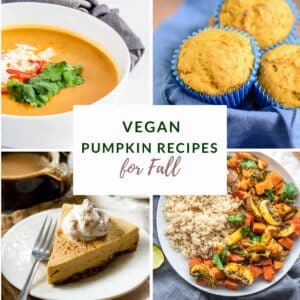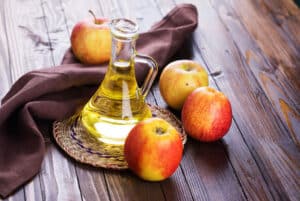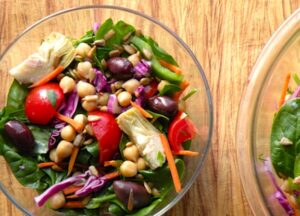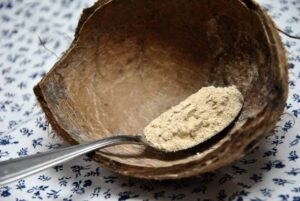Stuffed vegetables are fun and festive for company and holiday meals, yet comforting and easy enough for everyday dinners. Presenting simple grain dishes in edible containers makes both the grains and their vegetable containers more exciting. It's an especially nice presentation for fall meals, when “stuffable” vegetables are plentiful and the palate is primed for this kind of hearty food. Here’s a rundown on how to prepare a few common vegetables for stuffing, followed by suggestions for what to stuff into them. Photo by Hannah Kaminsky.
If you don't want to follow a formal recipe for the stuffing, think of making a simple pilaf with rice, quinoa, couscous, millet, bulgur, or even orzo (rice-shaped pasta), starting with a sauté of onion and garlic, and adding any combination of chopped nuts, dried fruit, fresh herbs, and your favorite seasonings. Or skip the grains and stuff vegetables with corn, mashed potato or sweet potato, lentils, or your favorite bread stuffing. The possibilities are endless!
Winter squashes (butternut, acorn, small sugar pumpkin, and carnival): Halve the squashes lengthwise with a sharp knife. Scoop out the seeds and fibers. Place halves, cut side up in foil-lined shallow baking dishes and cover tightly with more foil. Bake for 40 to 50 minutes in a 375-degree oven, or until easily pierced with a knife but still firm. When cool enough to handle, scoop out the pulp, leaving a sturdy, ½-inch-thick shell all around. Incorporate the squash pulp into the stuffing, or save for another use. Fill the squashes with the desired stuffing. Return to the baking dishes and bake for another 15 to 20 minutes, or until well heated through.
Eggplant: Cut the stem ends off eggplant, and cut in half lengthwise. With a sharp knife, carefully cut away the eggplant pulp in small chunks, leaving a sturdy shell about ½-inch-thick all around. Chop the eggplant pulp finely, steam until tender, and incorporate into stuffing or save for another use. Fill the eggplants with the desired stuffing and arrange in foil-lined shallow baking dishes. Cover loosely with foil, and bake at 375 degrees F. for 30 minutes, then bake uncovered for another 10 to 15 minutes, or until the eggplant shell can be easily pierced with a fork but has not yet collapsed.
Bell peppers: Recipes often call for stuffed bell peppers to be cooked or blanched before stuffing, but I find this step unnecessary. Carefully cut away the stem from each pepper, pulling out many of the seeds with it. Rinse the inside of each pepper to remove the remaining seeds. You can cut the peppers in half lengthwise, in which case they will lie easily on a baking dish; however, some of the stuffing tends to escape from the stem end. Otherwise, you can leave them whole, cutting a sliver off their bottoms so they will stand more steadily in a baking dish. In either case, prop the peppers securely against one another. Fill peppers with the desired stuffing and arrange in foil-lined baking dishes (deep dishes are desirable if the peppers are left whole). Cover loosely with more foil and bake at 350 degrees F. for 25 minutes, then uncover and bake for 10 to 15 minutes longer, or until the peppers are done to your liking.
Tomatoes: Large, firm, yet flavorful tomatoes are best for stuffing. Cut each tomato in half crosswise. Carefully scoop out the pulp using a sharp knife to loosen it and a spoon to scoop it out. Leave a sturdy shell about ¼-inch-thick all around. Incorporate the tomato pulp into the stuffing if desired, or reserve for another use. Fill the tomatoes with the desired stuffing and arrange in foil-lined baking dishes. Bake, uncovered, at 350 degrees F. for 25 to 30 minutes, or until the tomatoes are done to your liking.
Zucchini or yellow summer squash: Use at least medium-sized zucchinis or summer squashes for stuffing. Even the larger, less flavorful kind you don't know what else to do with work well for this, as once you remove the seeds you've got nice large cavities.
Remove the stem ends. A grapefruit spoon is ideal for removing the seeds and creating a cavity, but if you don't have one, use a small, sharp knife to carefully remove enough pulp to result in a ¼-inch-thick shell. Chop the pulp and steam it; if desired, incorporate it into the stuffing or save for another use, however, if most of what you’ve scooped out are seeds, then discard. Fill the zucchinis with the desired stuffing and arrange in foil-lined baking dishes. Cover loosely with more foil and bake at 350 degrees F. for 20 to 25 minutes, then uncover and bake for another 10 to 15 minutes, or until the zucchinis are done but still firm.
Here are several simple grain dishes that are perfect for stuffing into vegetables (or enjoying on their own). Mix and match these grain dishes with the stuffable veggies listed above.
- Simple Quinoa Pilaf with Squash and Almonds
- Fruit and Spice Couscous Pilaf
- Bulgur with Fine Noodles
- Saffron Fruited Rice
- Creole Orange Rice
Finally, here are some full recipes for stuffed vegetables on VegKItchen:






Comments
No Comments